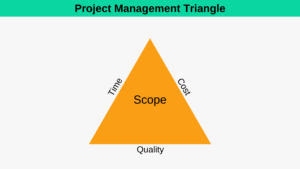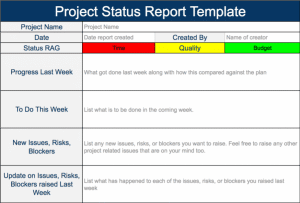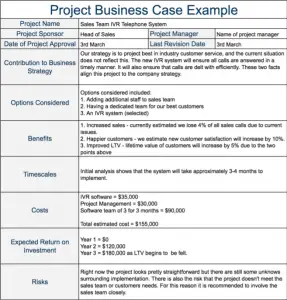Change requests occur because projects are unique in nature – essentially each project has never been undertaken before and is thus unique. This uniqueness brings with it inherent risk as we don’t understand everything about the project and its deliverables when we start the project. This risk could potentially delay the project or mean that it costs more to complete the project than initially expected.
For example, if you were the project manager for a house build and halfway through the build the client decided they’d additionally like to add an extra story to the house and also a swimming pool, then obviously this will impact how long the project takes to complete, as well as the cost.
Changes in scope are natural and happen for a host of reasons, but if they’re not controlled then the project could fail in a catastrophic way. In our house example this might mean that the client runs out of money before the build is complete. To avoid this type of scenario, changes must be carefully planned.
Change Request Template
To manage changes project managers use a change management process. The first step in the change management process is documenting any requested change via a Change Request. An example of a typical Change Request Template is shown below.
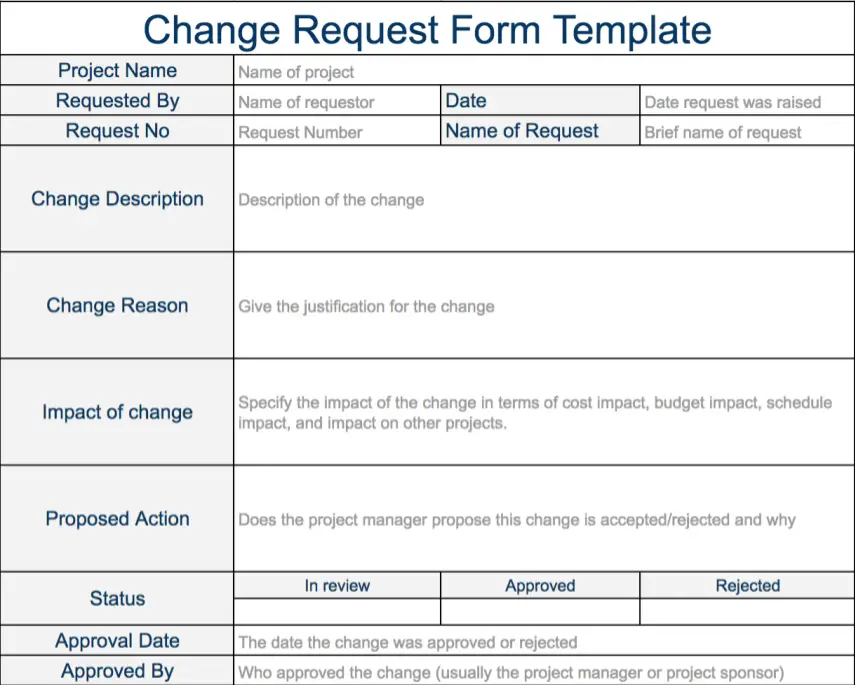
Key pieces of information contained within this Change Request Template are:
-
- Request No: A number assigned to uniquely identify each change request. You will see why this is important shortly when we look at a Change Log.
- Change Description: A brief description of the change that has been requested.
- Change Reason: The explanation has to why the change is being requested.
- Impact of change: here we specify what impact the change will have on the project. Will the change mean the project finishes sooner or later? Will the change mean the project costs less or more? Will the change impact quality in some way?
- Proposed Action: here the project manage will outline their recommendation for how they feel the change request should be handled. For example, they may propose that the change is accepted into the project but that some other deliverable is cancelled so the schedule isn’t affected.
- Status: every change request will be in review until it is either approved or rejected by the project sponsor. This is important: it is the project sponsor who approves or rejects change requests, not the project manager.
An example of a completed Change Request Template is shown below. In this example, the client chooses to add a swimming pool to their house build project.
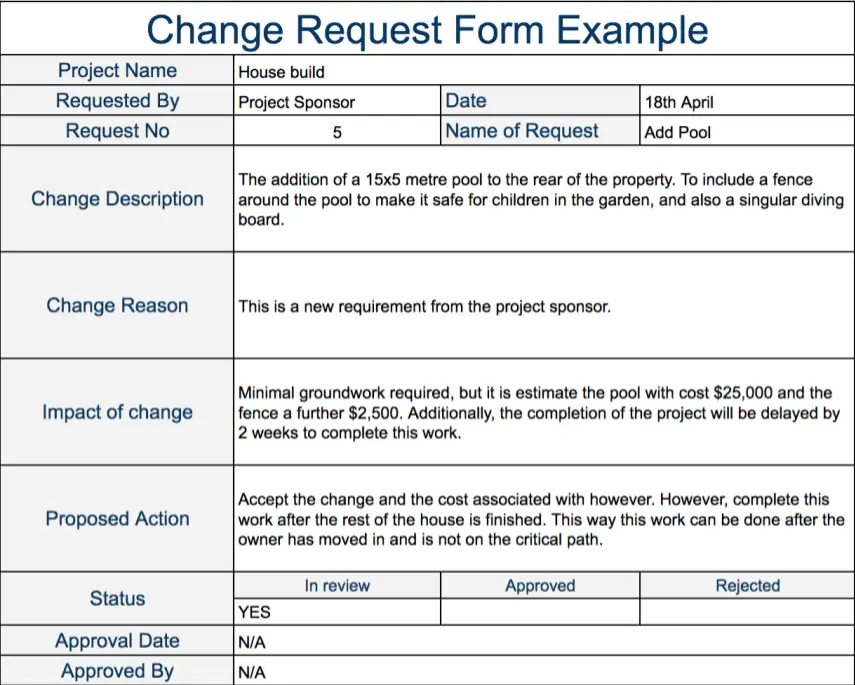
As you can see the person who commissioned the house, the project sponsor in project management terminology, has requested that a swimming pool be added to their original requirements. The project manager has then estimated the cost of these changes, totaling $27,500 and a two week delay to the overall schedule.
The project manager has also proposed a way to include this change request into the project plan so that it isn’t on the critical path, namely that the swimming pool isn’t built until the rest of the house is signed off and the project sponsor has moved into the house. As the change request hasn’t yet been signed off by the project sponsor, the status of this change request is still “in review”.
Change Request Log
As you manage your project you many find that the number of change requests mounts fast. Lots of change requests can be difficult to manage, which is why project managers will use a Change Request Log to keep track of all the changes. An example of a Change Request Log containing several change requests is shown below:
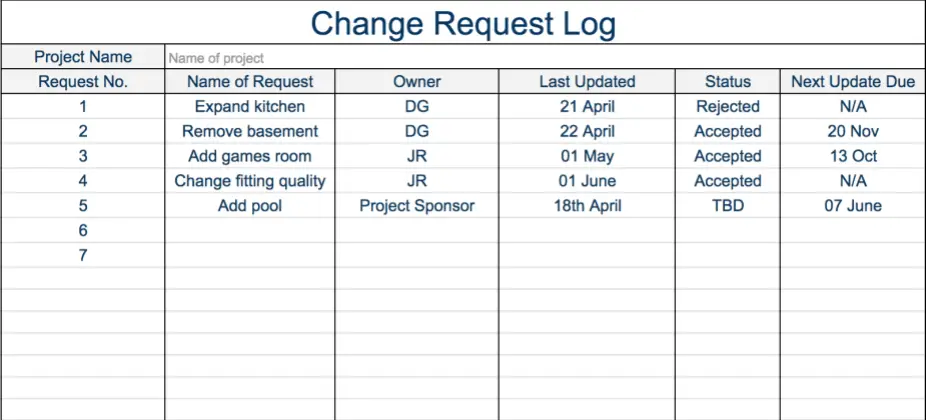
As you can see a Change Request Log provides you with an overview of all the change requests raised within a project, along with whether the change request has been accepted, rejected, or is still undecided (labelled TBD).
Change Request Summary
Because projects are both complex and unique, changes to the scope of a project is natural. However, if we don’t manage changes to the scope in a controlled manner then even simple projects can rapidly descend into chaos. To avoid chaos, we use Change Requests to manage changes to the scope of a project in a controlled way.
In their simplest form a Change Request will outline why a change in scope is required, what the change is, and whether the change has been accepted or rejected by the project. Change Requests are approved or rejected by the project sponsor, not the project manager. Because Change Requests are raised so frequently on projects, project managers will often use a Change Request Log to help them keep track of all the changes requested in their project.
